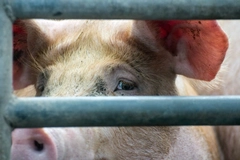
- Industry news
Industry news
- Category news
Category news
- Reports
- Key trends
- Multimedia
- Journal
- Events
- Suppliers
- Home
- Industry news
Industry news
- Category news
Category news
- Reports
- Key trends
- Multimedia
- Events
- Suppliers
Australian Food Standards Watchdog Considers Broadening Steviol Glycosides for Sweeteners

07 Nov 2016 --- Food Standards Australia New Zealand (FSANZ) is looking into the possibility of allowing a wider range of steviol glycosides to be used as intense sweeteners following an application by PureCircle Ltd to change the definition of the chemical compounds responsible for the sweet taste of stevia leaves.
FSANZ - which develops standards that regulate the use of ingredients, processing aids, colorings, additives, vitamins and minerals - is calling for submissions on permitting more steviol glycosides in the same way as they are allowed in the US, EU, Asia and Latin America.

FSANZ CEO Steve McCutcheon said the applicant, Illinois-based PureCircle Limited, is seeking to amend the definition of steviol glycosides in the Food Standards Code to include all minor steviol glycosides extracted from the stevia leaf.
“Steviol glycosides are permitted food additives in the Codex Alimentarius General Standard for Food Additives, and in many countries including the USA, the European Union, Canada and many Asian, and Central and South American countries,” McCutcheon says.
“The additional minor steviol glycosides are claimed to provide improved flavor and taste compared to those currently permitted. No evidence was found to suggest that the proposed changes pose any public health and safety concerns.”
All FSANZ decisions on applications are notified to ministers responsible for food regulation who can decide to ask for a review or agree that the standard should become law. The closing date for submissions is December 19, 2016.
The addition of these minor steviol glycosides to the Australia New Zealand Food Standards Code (the Code) will be in addition to the 10 steviol glycosides currently listed. These minor steviol glycosides claim to provide improved flavor and taste compared to the currently permitted steviol glycosides, according to a FSANZ report.
“Permitted food additives also need to have an appropriate specification for identity and purity. Primary sources of specification for steviol glycosides are contained in the Code, but they do not apply to all steviol glycosides extracted from the stevia leaf. Therefore, a new specification which includes all minor steviol glycosides extracted from the stevia leaf has been drafted. A new CF has also been proposed to be added into the Code to capture all other steviol glycosides not already listed,” it says.
Meanwhile, there is another call for submissions from the FSANZ - this time to consider setting maximum residue limits (MRLs) for the veterinary chemical avilamycin in the Food Standards Code.
This application has come from Elanco Animal Health and seeks to harmonize MRLs for avilamycin in specific pig products and aligning the Food Standards Code with international Codex Alimentarius Standards.
“Avilamycin is an antibiotic which has existing permissions for use in poultry products in Australia and is approved for use overseas in pig products. After undertaking extensive dietary exposure assessments and reviewing the best available toxicological and microbiological data, FSANZ has determined that there are no public health or safety issues associated with the proposed MRL in specific pig products with the proposed permitted residue dichloroisoeverninic acid”, says FSANZ CEO Steve McCutcheon.
The closing date for submissions is December 5, 2016.










